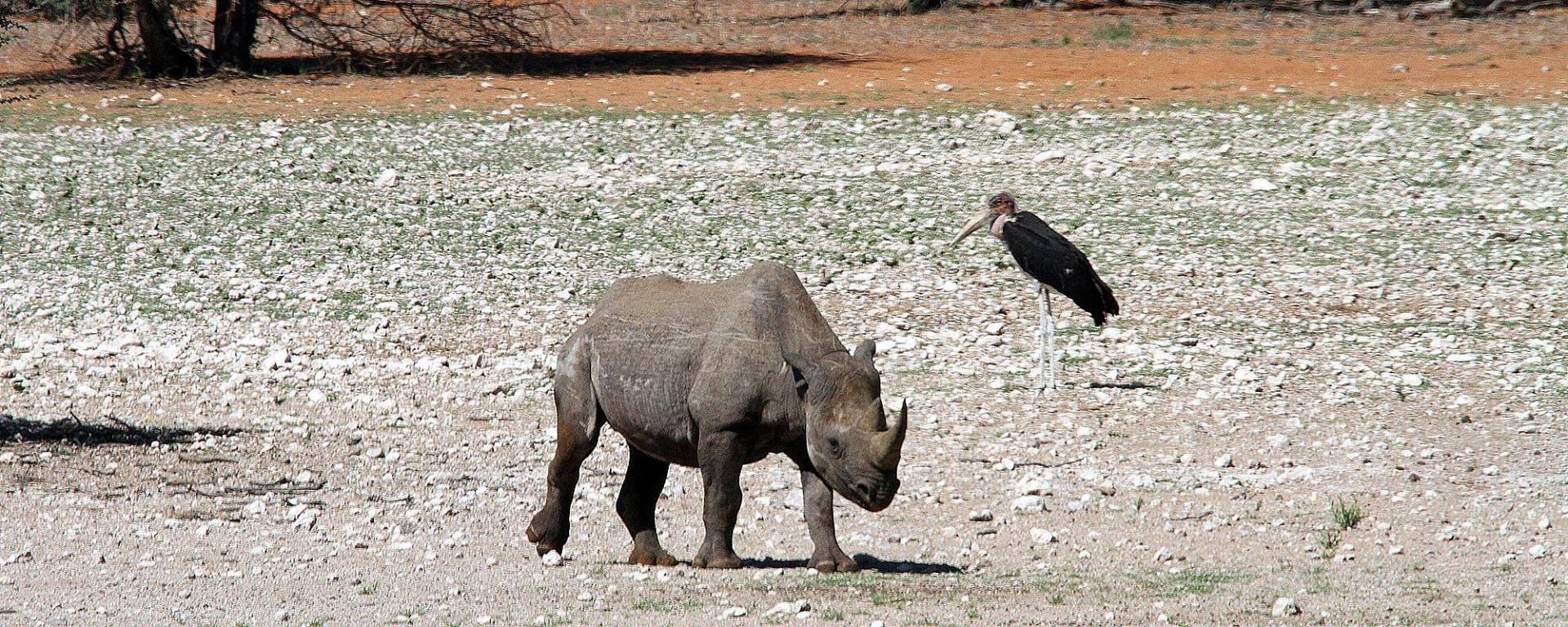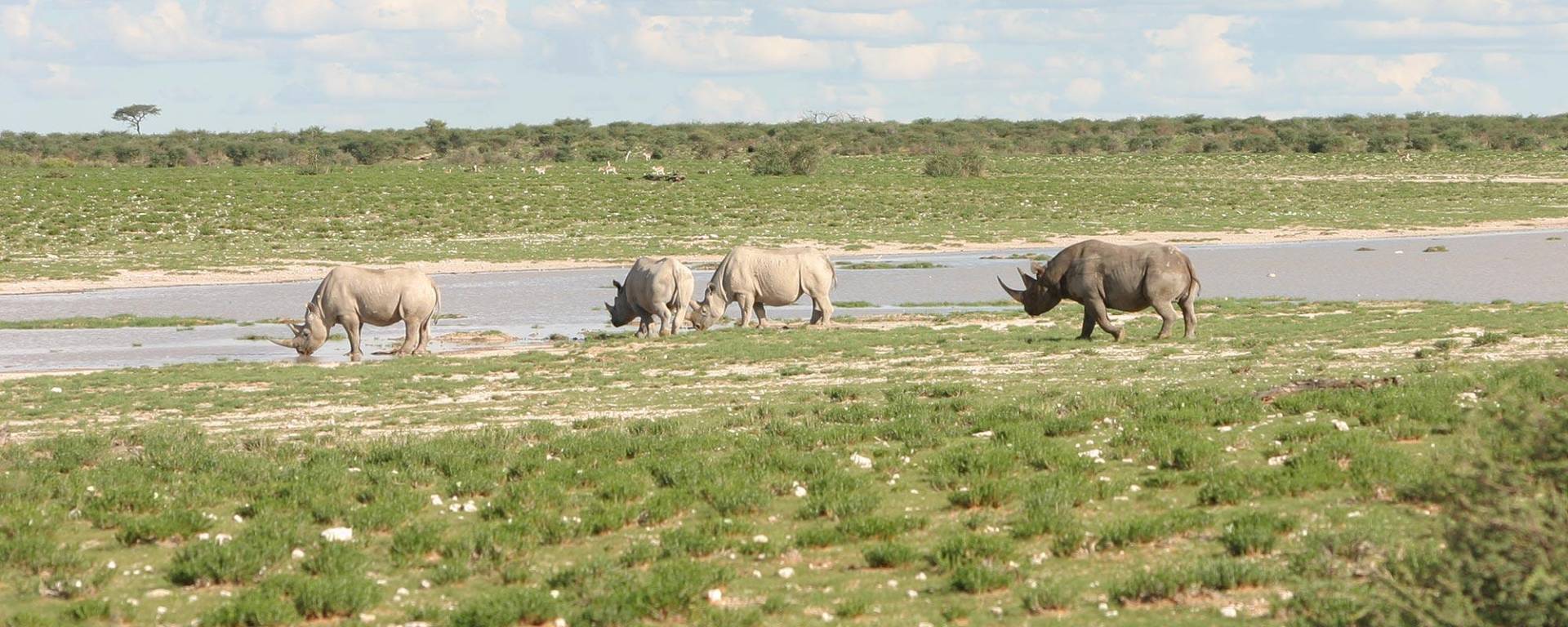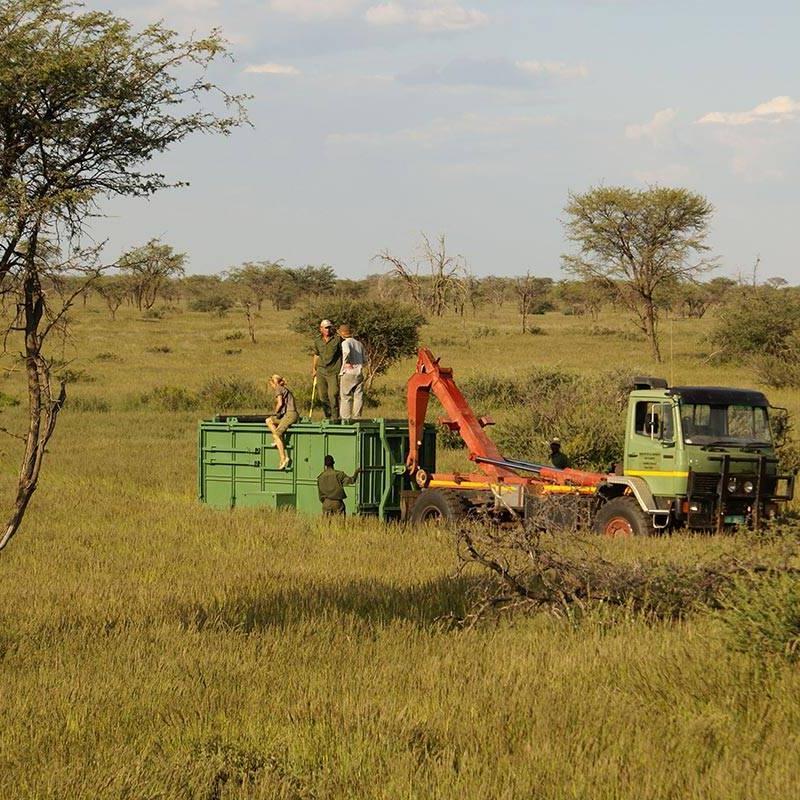Black Rhino Custodian Project
In the beginning of the 20th century about 400`000 black rhinos (Diceros bicornis) roamed widely across the savannas of Africa, only avoiding the equatorial forest belt and some of the most arid desert regions (IUCN). Their number declined to about 65`000 in 1970 (IUCN; Swart et al. 1994; Hearne and Swart 1991) and then drastically crashed to about 2`000 individuals in 1994 (IUCN; IRF), mainly because of poaching (IRF; Swart et al. 1994; Hearne and Swart 1991) and habitat loss. Breeding programs, the control of poaching and the international ban for trading with rhino horn slowed the complete extinction of this species. However, populations are small and fragmented and today black rhinos only occur in isolated pockets in a few African countries. Furthermore a new wave of highly sophisticated poaching is now seriously threatening the species survival in the wild.
As part of a national breeding program initiated in 1993 Kuzikus is working together with the Namibian government to prevent the extinction of black rhinos in the wild. By visiting Kuzikus you can learn more about our attempt to combine tourism, education and research with this exceptional conservation project.
















